Have you heard of this thing called “shipping?” Basically, every film, TV show, or book has a contingent of fans (called “shippers”) who obsess over two characters becoming a couple. They plaster Tumblr and Twitter with artwork and memes about the prospective romance.
Well, there’s no denying it: I ship the hell out of Brand and Cooper. Over Interstellar’s 169 minutes, Anne Hathaway and Matthew McConaughey share a compelling rapport that evolves from antagonism to affection.
.
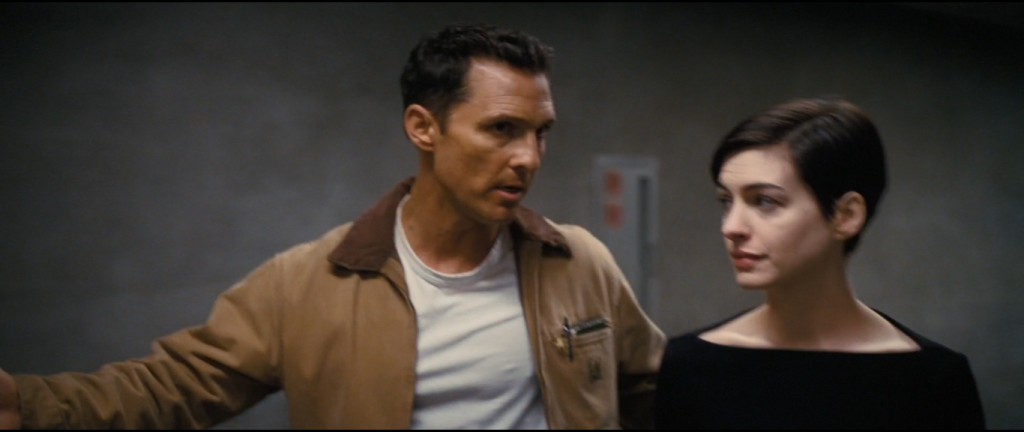 .
.
As they trade barbs in interrogation, we get our first glimpse of an electric chemistry. They’re like two kids being mean to each other to hide an attraction. This caustic tone carries over to the Endurance, when Brand initially rejects Cooper’s olive branch.
COOPER
You know, it’s hard leaving everything. My kids. Your father.
BRAND
We’re going to be spending a lot of time together…
COOPER
We should learn to talk.
BRAND
And when not to. Just being honest.
COOPER
I don’t think you need to be that honest. TARS, what’s your honesty parameter?
TARS
90 percent.
COOPER
90 percent?
TARS
Absolute honesty isn’t always the safest or the most diplomatic form of communication with emotional beings.
COOPER
Okay. 90 percent it is, Dr. Brand.
In the screenplay, Nolan says Brand “can’t help smiling” at that. Impressed by his persistence, she’s less cool to him moving forward. In fact, she shows vulnerability when discussing their plight in the next scene. Sensing her anxiety, Cooper lightens the mood.
BRAND
This crew represents the best of humanity.
COOPER
Even me, huh?
BRAND
We agreed—90 percent.
COOPER
There ya go.
.
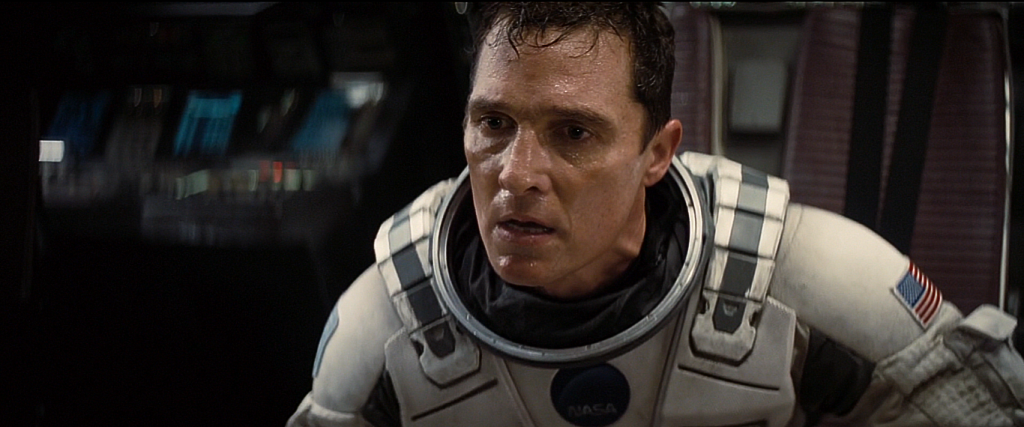 .
.
The first challenge to their relationship comes on Miller’s planet. When Brand does the “right” thing instead of the smart thing, they swap irrational accusations. However, it quickly becomes clear that they’re angry with themselves (Brand for her error, Cooper for leaving Murph). They’re merely projecting self-loathing.
Miller’s planet deeply affects them both. The ever-practical Brand begins to act on emotion. After lamenting to Romilly that “kn[owing] the theory” hadn’t helped her, she makes a powerful case for following her heart. Meanwhile, Cooper has a moment of coldness; he takes a pragmatic stance that’s decidedly Brand-like.
COOPER
You’re a scientist, Brand.
BRAND
So listen to me when I say that love isn’t something we invented. It’s observable. Powerful. It has to mean something.
COOPER
Love has meaning, yes. Social utility, social bonding, child rearing…
BRAND
We love people who have died. Where’s the social utility in that?
COOPER
None.
BRAND
Maybe it means something more—something we can’t yet understand. Maybe it’s some evidence, some artifact of a higher dimension that we can’t consciously perceive. I’m drawn across the universe to someone I haven’t seen in a decade who I know is probably dead. Love is the one thing we’re capable of perceiving that transcends dimensions of time and space. Maybe we should trust that, even if we can’t understand it yet. [Long pause] All right, Cooper—yes. The tiniest possibility of seeing Wolf again excites me. That doesn’t mean I’m wrong.
COOPER
Honestly, Amelia—it might.
In reversing roles, Cooper and Brand gain new insights into each other’s makeup and motivations. That moment, contentious as it is, transforms their attraction into something more soulful. It also foreshadows the tesseract, where Cooper rediscovers his faith that love is “forever,” as well as the wormhole sequence (put a pin in that—we’ll get back to it later).
.
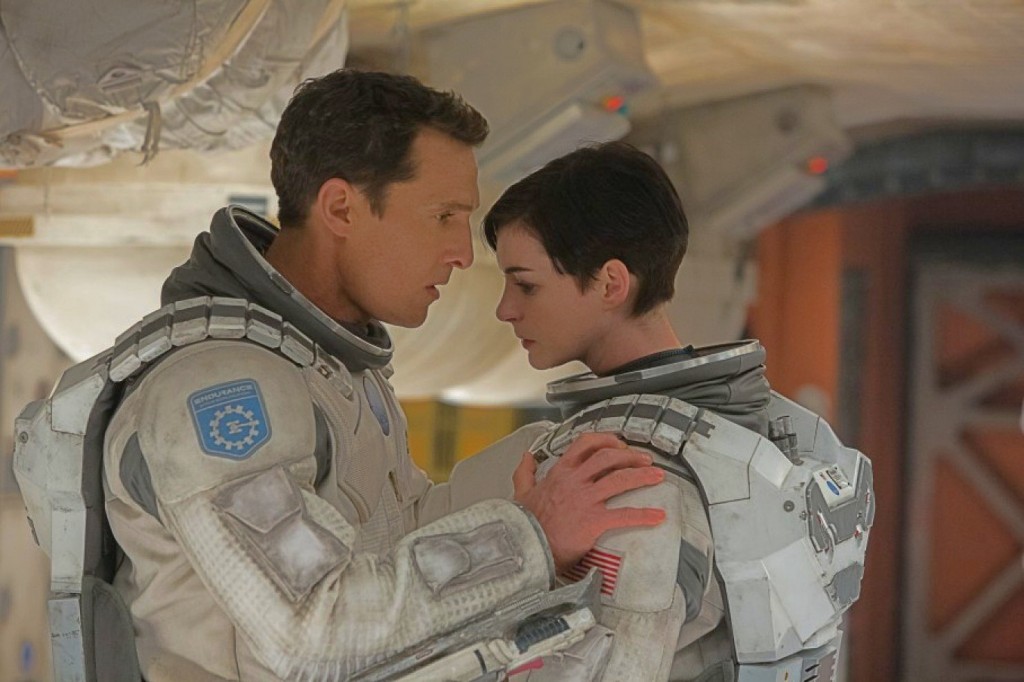 .
.
This deepened connection is affirmed on Mann’s planet. When Brand receives word of her father’s death, she’s comforted by Cooper. And when Plan A is revealed as deceit, they stand united in grief and anger. Following Mann’s explanation, Brand has every reason to be lost in her own sorrow. Instead, she’s focused on Cooper’s pain.
BRAND
Cooper, what can I do?
COOPER
(leans in, grasping her shoulder)
Let me go home.
The connection is further strengthened when Brand saves him from suffocating—and when Cooper saves not only Brand, but the entire human race, during the dramatic docking scene. Their delirious mirth upon surviving (“and for our next trick…”) is Nolan’s version of a McConaughey RomCom beat. It bridges nicely to their most intimate moment, which comes as Cooper explains his plan. From Nolan’s screenplay:
BRAND
And the time slippage?
COOPER
Neither one of us can afford to worry about relativity right now.
BRAND
I’m sorry, Cooper.
They embrace, delicately touching faceplate to faceplate.
.
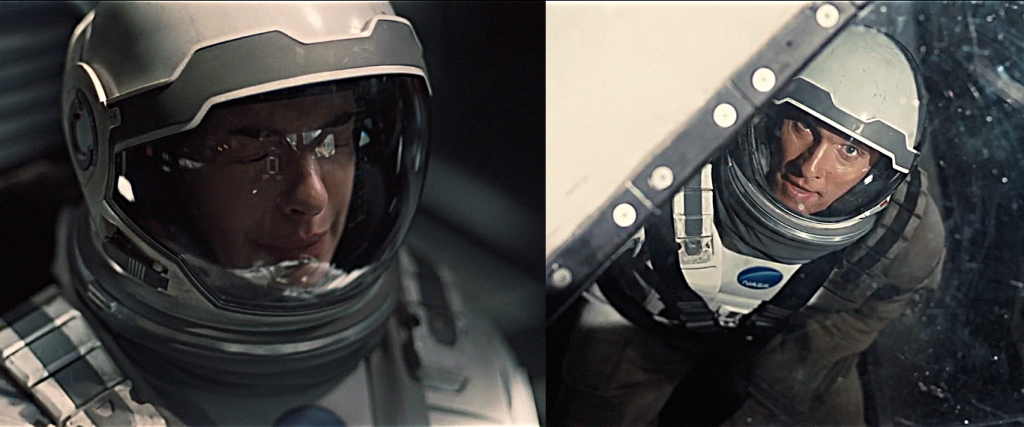 .
.
As they slingshot around Gargantua, their banter is comfortable and familiar; they have the rapport of an emerging couple. “You don’t sound so bad for pushing 120,” Brand remarks. She isn’t prepared for the revelation that Cooper won’t be joining her. Furious with his decision to sacrifice himself, and overwhelmed by her fate as the last living human, Brand breaks down. As described in Nolan’s screenplay: “[I]nside her helmet, Brand is crying, zero-G tears catching in her eyelashes like melted snowflakes.” Cooper, meanwhile, “looks at her fondly,” his final utterance “catching in his throat.”
COOPER
Detach.
There’s a sense of finality here. The first time I saw Interstellar, I was certain this scene marked Cooper’s death. Instead, Nolan takes a sharp turn into uncharted space. He sends Cooper, and us, plummeting into blackness for the most transcendent experience in the history of film. Inside the tesseract, Cooper’s bond with Brand becomes more important than ever. Peering at his daughter across space-time, Cooper recalls Brand’s passionate conviction that love is eternal—an “artifact of a higher dimension.”
COOPER
They’re not bound by anything. They can’t find a specific place in time that they can communicate. That’s why I’m here. I’m gonna find a way to tell Murph, just like I found this moment.
TARS
How?
COOPER
Love, TARS—love. It’s just like Brand said. My connection with Murph—it is quantifiable. It’s the key.
In relaying the quantum data that saves earth, Cooper proves Brand’s theory to be scientific fact—restoring his faith that love is “forever.”
.
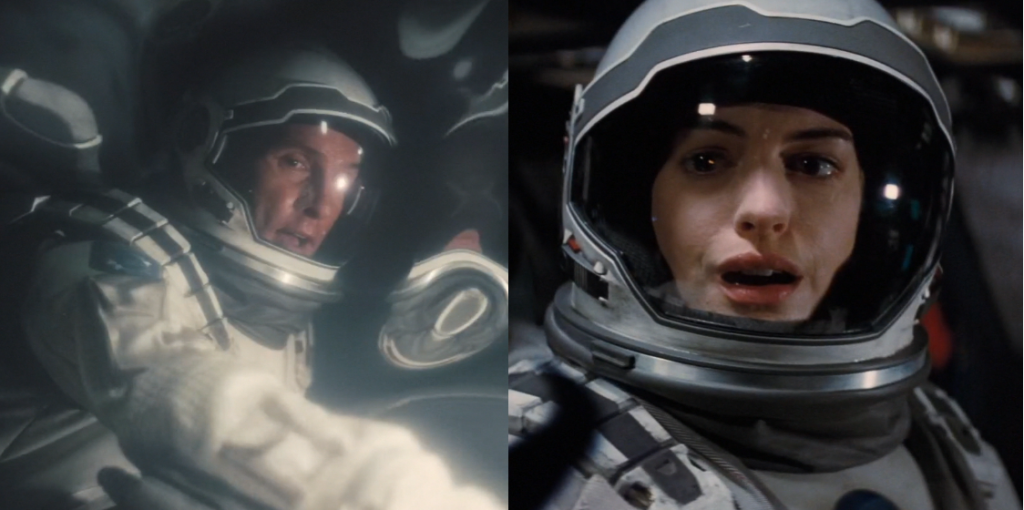 .
.
Following the tesseract’s collapse, Cooper finds himself floating through “the bulk.” He comes upon the Endurance and, reaching through the hull, grasps Brand’s hand across dimensions. How did he find her? After all, “The Bulk Beings” are incapable of finding specific moments in time. From my perspective, there’s only one explanation: the strength of Cooper’s and Brand’s connection allows him to locate her, just as his love for Murph prevailed inside the tesseract.
Perhaps it’s not love he feels for Brand, but it’s something—a definable bond that functions as spiritual GPS. When I think of this moment, and Cooper’s dreamy grin, I imagine their reunion with a sense of great hope. Edmunds’ planet is a crucible in which sorrow will be burnt away.
Like many aspects of Interstellar, Cooper’s and Brand’s relationship feels richer with each viewing. Interestingly, Jonathan Nolan’s earlier screenplay draft featured a full-blown romantic subplot. Christopher’s version relies on subtlety and inference, presenting a compelling dynamic without distracting us from Cooper’s and Murph’s story.
Just one more reason this movie is so good.






pretty sure it’s love he feels for her – cause she said that love is the ONE thing we humans are capable of perceiving that transcends dimensions of time and space. so that’s why he located her; it was him all along in that part where brand saw that distortion of spacetime and was so compelled to touch it.
yeah, I think so